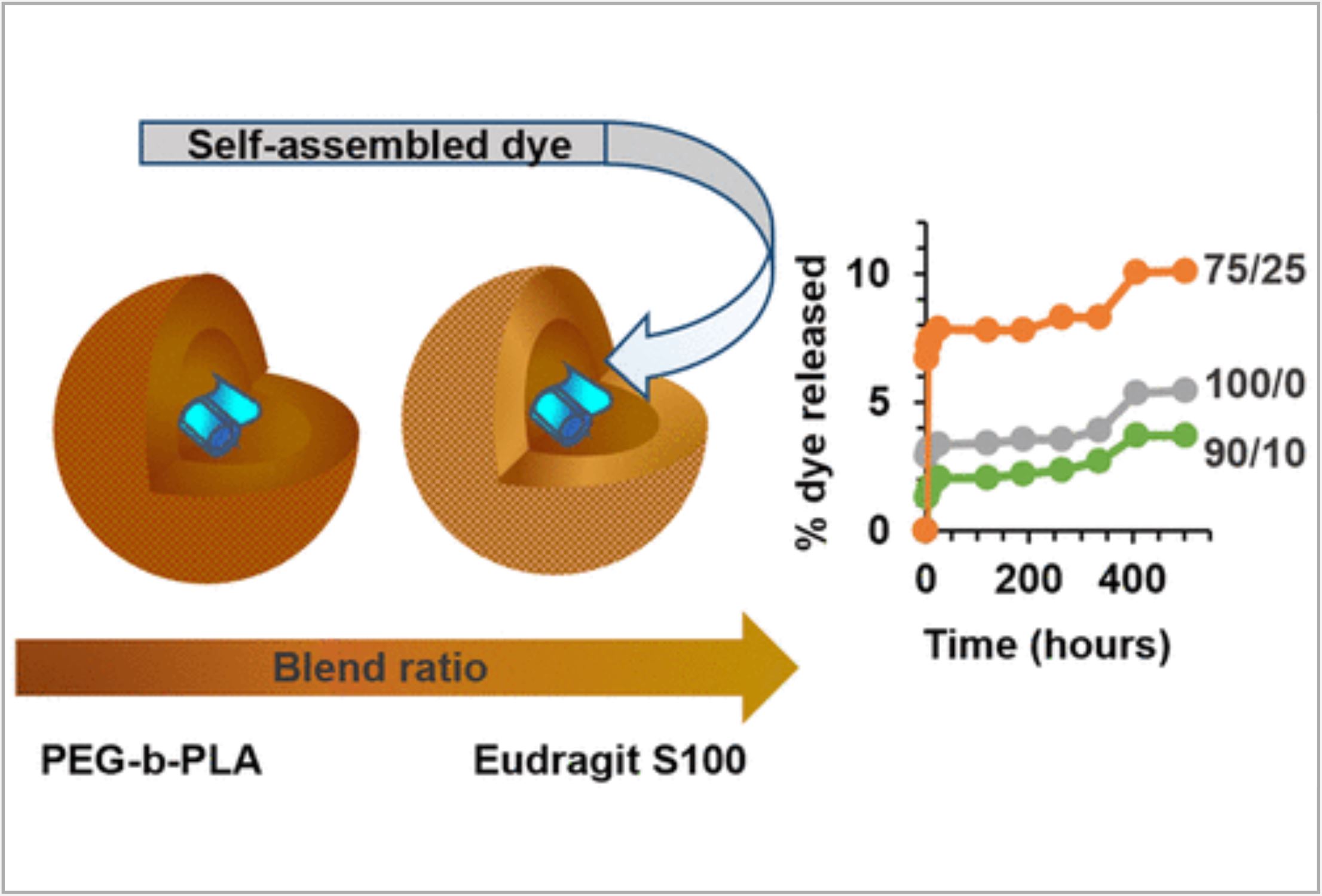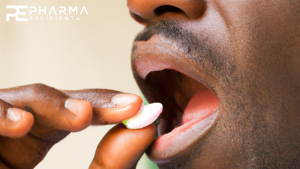Study of PEG-b-PLA/Eudragit S100 Blends on the Nanoencapsulation of Indigo Carmine Dye and Application in Controlled Release

A nanocapsule shell of poly(ethylene glycol)–block-poly(d,l-lactic acid) (PEG-b-PLA) mixed with anionic Eudragit S100 (90/10% w/w) was previously used to entrap and define the self-assembly of indigo carmine (IC) within the hydrophilic cavity core. In the present work, binary blends were prepared by solution mixing at different PEG-b-PLA/Eudragit S100 ratios (namely, 100/0, 90/10, 75/25, and 50/50% w/w) to elucidate the role of the capsule shell in tuning the encapsulation of the anionic dye (i.e., IC).
The results showed that the higher content of Eudragit S100 in the blend decreases the miscibility of the two polymers due to weak intermolecular interactions between PEG-b-PLA and Eudragit S100. Moreover, with an increase in the amount of Eudragit S100, a higher thermal stability was observed related to the mobility restriction of PEG-b-PLA chains imposed by Eudragit S100. Formulations containing 10 and 25% Eudragit S100 exhibited an optimal interplay of properties between the negative surface charge and the miscibility of the polymer blend.
Therefore, the anionic character of the encapsulating agent provides sufficient accumulation of IC molecules in the nanocapsule core, leading to dye aggregates following the self-assembly. At the same time, the blending of the two polymers tunes the IC release properties in the initial stage, achieving slow and controlled release. These findings give important insights into the rational design of polymeric nanosystems containing organic dyes for biomedical applications.
Download the full article as PDF here: Study of PEG-b-PLA/Eudragit S100 Blends on the Nanoencapsulation of Indigo Carmine Dye and Application in Controlled Release
or read it here
Materials
Indigo carmine, poly(vinyl alcohol) (PVA, MW 30–70 kDa), HPLC-grade dichloromethane (DCM), HPLC-grade water, and phosphate-buffered saline (PBS) were all purchased from Sigma-Aldrich Chemicals (Israel). Methoxy-poly(ethylene glycol)-block-poly(d,l-lactic acid) (PEG-b-PLA with 5 kDa PEG and 100 kDa PDLLA) was purchased from Jinan Daigang Biomaterial Co., Ltd. (China). The Eudragit S100 copolymer was obtained from Evonik Röhm GmbH (Germany).
Shaked Ashkenazi, Pnina Matsanov, Eid Nassar-Marjiya, Shady Farah, and Iris S. Weitz, Study of PEG-b-PLA/Eudragit S100 Blends on the Nanoencapsulation of Indigo Carmine Dye and Application in Controlled Release, © 2024 The Authors. Published by American Chemical Society. This publication is licensed under CC-BY-NC-ND 4.0., ACS Omega 2024, Publication Date:March 5, 2024, https://doi.org/10.1021/acsomega.3c10447
Read also our introduction article on Orally Disintegrating Tablets (ODTs) here:


